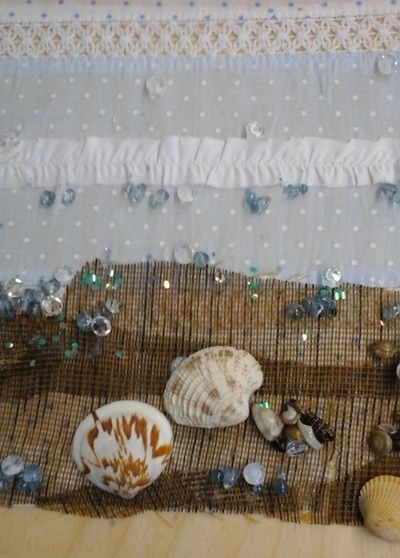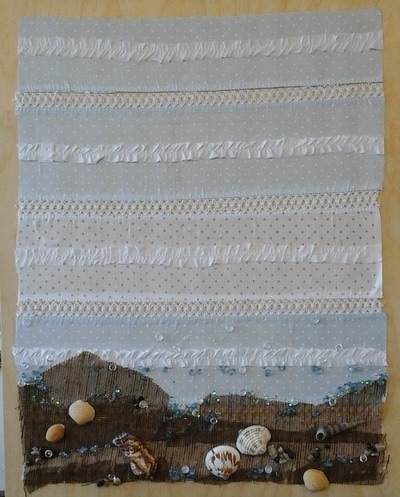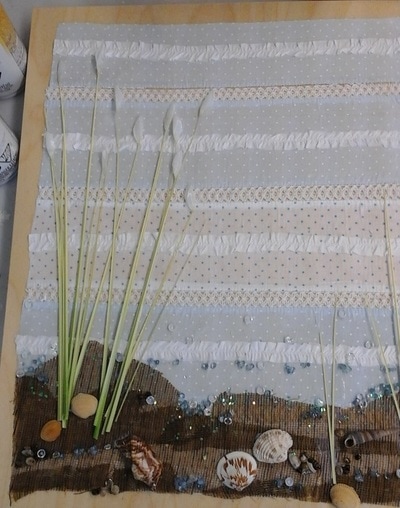...and it rained for 40 days and 40 nights... well it seems like it has. The rivers keep rising.... sandbagging, evacuations and roads buried by water. The rocks and things that I use to judge how high the river is have all been drowned, including my neighbour's dock, which hasn't been seen for a week.
I went into Rockland to pick up a few things on Tuesday and the waterfront homes were surrounded by water... the river on one side and the flooded road on the other. Fortunately the houses were built up higher on the lots than the river and the road, but people were busy sandbagging just in case. On the way home I found the lineup for the ferry at a stand still and two tractor trailers backing up the road, away from the ferry. It seems that the water is over the wharf, and while they have been building it up with earth, it was deemed too dangerous to get fully loaded tractor trailers onto the ferry. The risk of them tipping over was too great.
Hopefully, with no rain today and maybe not tomorrow the river will drop a bit, but the forecast is for more rain starting Friday and running well into next week. Gonna need to get that Ark built in a hurry or strap a keel and rudder onto my house!
I am continuing to work on my four seasons pieces, but ran into some problems with paint, so I thought I would expand on that for you today.
Paint Drying in the Tube:
Today I needed to dig out my Titanium Buff and Naples Yellow. Both are useful colours but not colours that I use often, so I had stored them away in plastic bins. When I hauled them out both colours had started to dry in the tubes. They were too thick to squeeze out of the tubes so I cut them open to expose the paint, which I was able to use by adding water and mixing, and mixing, and mixing. The Naples Yellow was in a metal tube with a hard plastic screw-on cap. There was a build up of paint which prevented an airtight seal. The other tube was clear plastic with a plastic screw-on cap. Unfortunately I had closed it without expelling the air inside the tube and so the paint started to dry out. Both could have been kept fresh with a little more care on my part.
If you find your paint has started to dry in the tube, I suggest that you cut the tube open and transfer the paint into a small, airtight jar. (I use the 125 ml mason jars because they are small enough, have an airtight seal and when the lids and inserts rust, you can replace them for a few cents each.) Once the paint is in the jar spritz it with clear water and seal the jar. The water will be absorbed into the paint and, as long as it is not too far gone, will get back to it's original consistency, by adding and absorbing water as needed. This trick will also work with acrylic mediums. You can add up to 25% water to any acrylic product and not do it any harm.
Lifting Dry Paint:
Speaking of how much you can thin acrylic products, have you ever had dry acrylic paint lift of the canvas when you paint over it? This can be caused by mixing too much water with your paint, which breaks down the ability of the polymer medium to bond the pigment to the canvas.
If you have this problem you can very carefully apply a coat of liquid medium over the area to try and seal it. To avoid the problem in future, use Liquid Medium to thin your paint. If you prefer a more watery consistency medium, you can thin it up to 25% with water.
Colour Shift:
Colour shift refers to the change in the colour of acrylic paint when it dries as compared to while it was wet. This happens because the polymer binder used in acrylics is milky in it's liquid state, but it dries clear. This is more pronounced in student grade and inexpensive paints.
Once you become familiar with the amount of shift your particular brand of paints cause you can adjust your colour mixing to match a previous colour. You could also use a higher quality of paint, or, you can add a bit of Zinc/Mixing White (PW4), which is a transparent white, so it doesn't make your colour chalky, but does compensate for the polymer becoming clear.
Paint Drying Too Fast:
This is a common complaint about acrylics, one that I also had when I first started using them. Because acrylic paints dry through the process of evaporation, the weather/atmosphere also affects the drying time, so if it's a damp rainy day (like we've been having) they will dry more slowly. On a hot dry summer day, or in an air-conditioned room they will dry much faster.
There are ways to compensate for this though. Spritz your palette with water as needed, which is my favourite method; use acrylic retarder, which can be brushed on your canvas where you are going to paint, or mixed with your paint; or you can purchase Golden Open Acrylics, which have a drying time of about 4 hours.
Not Drying at All:
This can be the result of having used too much retarder with your paint... always a good idea to read the label to see how much is recommended. The alternative is removing as much of the paint that won't dry, as you can, from the painting and starting again.
Paint is Not Covering What is Underneath:
This can be a pain if you are trying to paint over a background or strong colour, and has to do with the transparency or opacity of the paint you are using. Paints that conform to the ASTM (American Society for Testing and Materials) standards will list the opacity/transparency level on the label.
Options include multiple layers of colour to hide what is underneath; painting the area in question white and then recolouring it; switching to a more opaque version of the colour; or adding a little Titanium White, (PW6) which is very opaque, to your colour. I have also tried a medium which is supposed to increase opacity optically, but wasn't overly impressed with it.
Varying Levels of Gloss and Matte in a Painting:
Different pigments have different qualities and some dry more matte, or glossy, than others. To solve the problem it is a simple matter of giving the painting a coat of medium or varnish in the sheen that you prefer. Many mediums and varnishes can be mixed (the same type by the same manufacturer) to create a custom sheen.
Pigment and Binder Separation:
You squeeze the paint onto your palette and you get a clear, jelly like substance with no pigment. I have experienced this with one particular brand of paint, many years ago, but not so much recently. In the artist paint industry it is referred to as being "overbound", which translated means that there is more binder than needed for the pigment load.
Short of getting your money back or a replacement from your supplier or the manufacturer you can squeeze it into one of those little mason jars (gotta love them!) and mix it back together and continue to use it.
So there you have it! If you run into problems with acrylics please feel free to contact me, because I probably have an answer to your dilemma!
Lately I have been working on my Summer piece of the four seasons series. This is the one I have struggled with the most. Summer conjures up ideas of bright colours... the brilliant beach umbrellas, the riot of colours in the garden, and flashy shorts, bathing suits and beach towels, but it wasn't coming together for me. I kept gravitating towards the colour blue. I found a piece of fabric that I knew was perfect for the background and had to have it even though the plan had not developed.
Later, in a moment of inspiration I realized that the blue was a summer sky and white was the surf on the water and the colours suddenly worked together as beach colours... sand, sea, surf and sky. Summer for me is a time to relax and unwind, which fits with my choice of colours and materials for this particular piece. It's the influence of past holidays on the eastern coast of North America. I'd love to get the beach donkeys of the UK included, but I think that will be another piece altogether.
So, here's where Summer is right now..
This workshop will combine demonstrations and lots of hands-on practice with the mediums listed. Students will need to bring one or two paintbrushes and a standard palette knife (plastic ones are fine). All other materials will be supplied. Participants will create a number of works of art during the workshop. Don’t miss out. Sign up today!
What you will learn:
Polymer medium: How and why to use it
Self Leveling Gel: Marbling; Making texture mediums
Gel Medium: Creating texture; Adding interest; Extrusion;
How to make photocopy transfers;
How to make “skins”
Light Molding Paste: Creating a unique painting ground
Clear Tar Gel: Drizzling
Texture mediums: Different types and uses
Pouring medium: Create some really neat artwork!
Saturday, June 3, 2017, from 12:30 to 4:00 PM
Fee: $75
Kevin Dodds Gallery: 1101 Bank Street, near Sunnyside, Ottawa
Information and Registration: ashbrookcreative@gmail.com; www.susanashbrook.com; 613-833-8312
This workshop is all about learning to see and think as an artist. A series of exercises will help this become second nature so that you will easily recognize potential subject matter, instinctively know what colours to use and develop the internal tools to become a better artist, no matter what your medium. We will consider perception, seeing rhythm and patterns, what to leave out and much more. Students will need to bring their basic art supplies (any medium) and a sketch book.
Sat Jun 17, 12:00 to 4:00 PM
Fee: $45
Susan's Studio: 2531 Manse Rd, Cumberland Village, Ottawa
Information & Registration: ashbrookcreative@gmail.com;
www.susanashbrook.com; 613-833-8312
Thanks for tuning in!
Best wishes,
Susan






 RSS Feed
RSS Feed